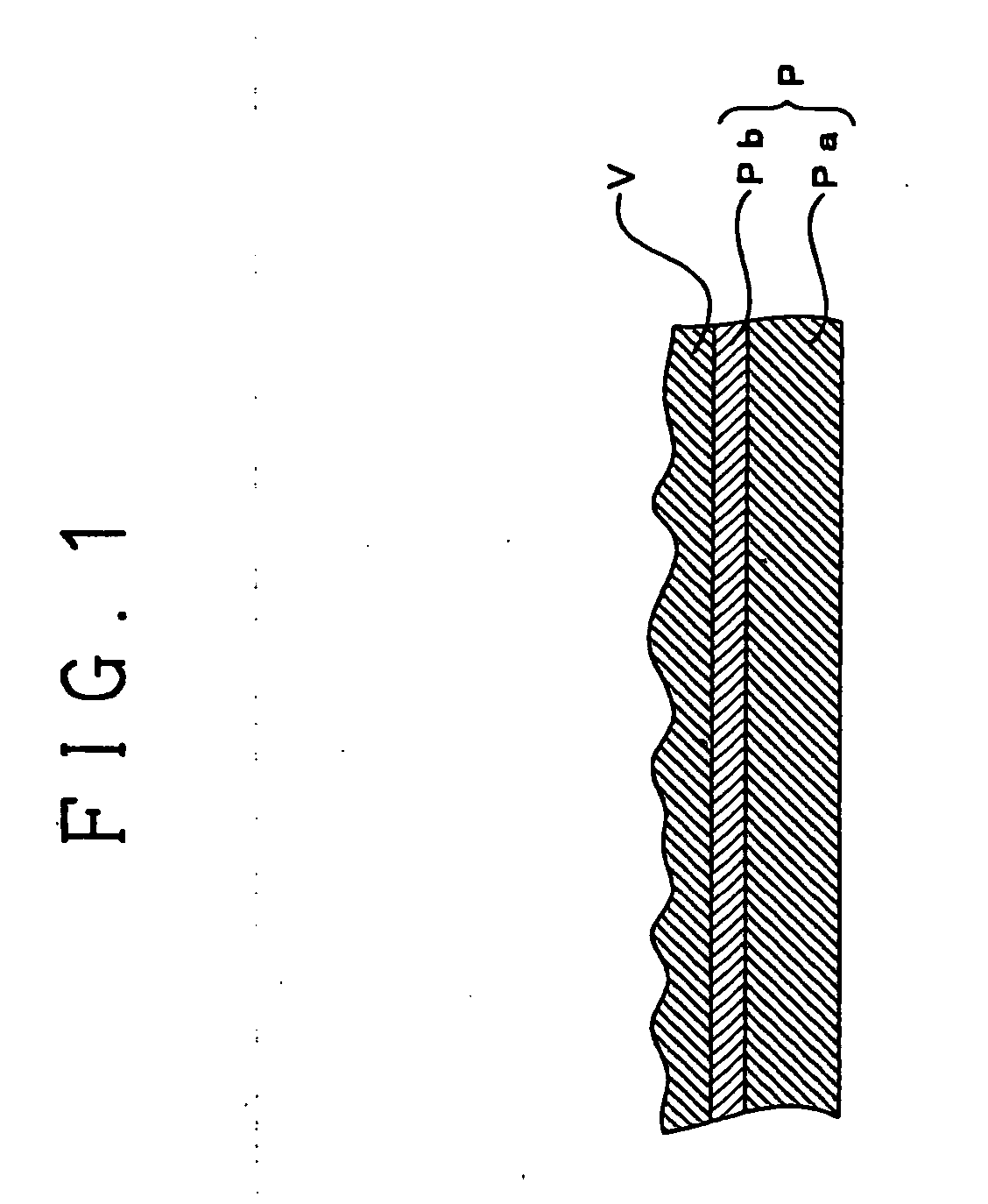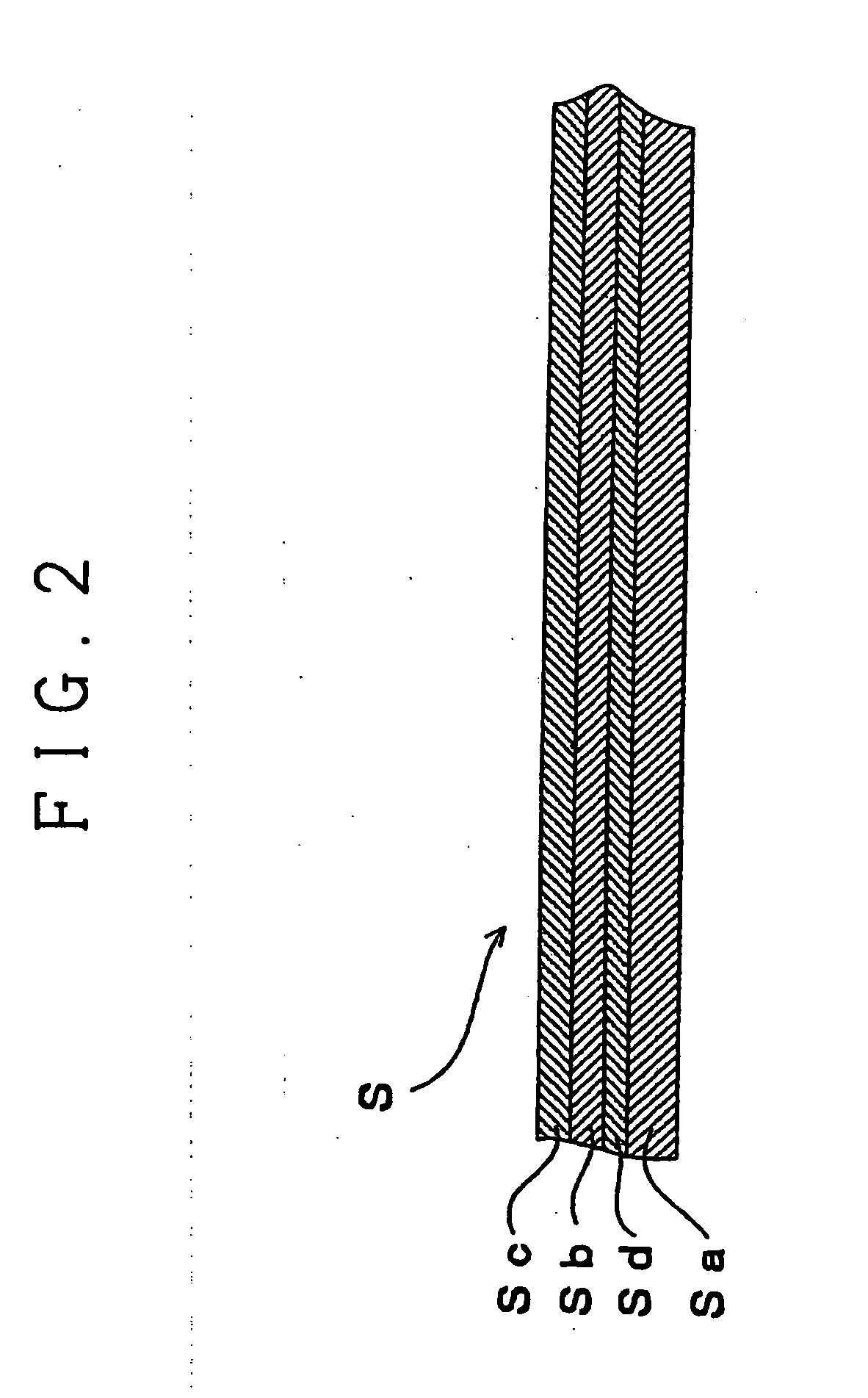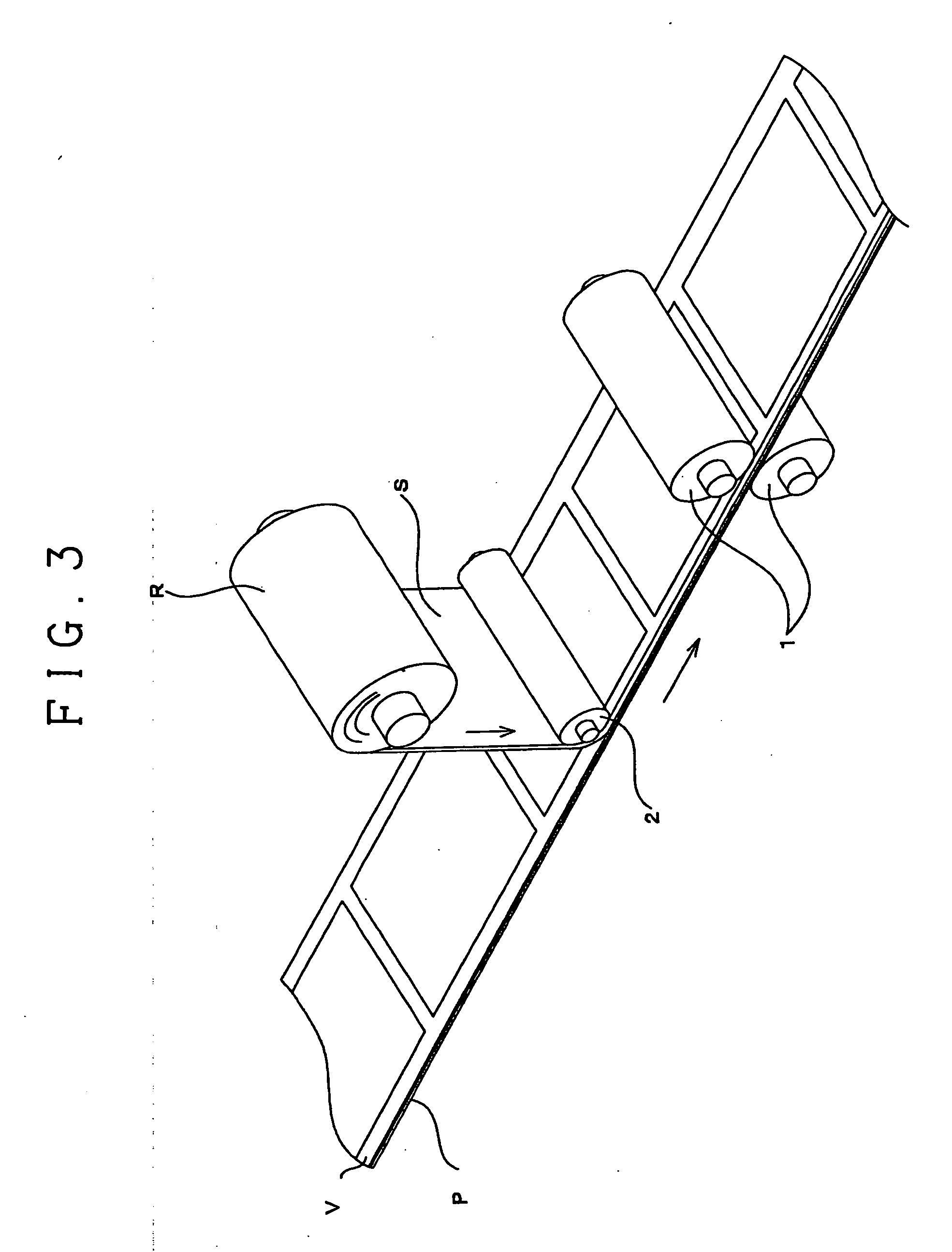Laminate sheet and lamination method
a technology of laminate sheet and lamination method, which is applied in the direction of synthetic resin layered products, instruments, transportation and packaging, etc., can solve the problems of unfavorable softening, and achieve the effect of excellent effect, excellent effect and gloss finish
- Summary
- Abstract
- Description
- Claims
- Application Information
AI Technical Summary
Benefits of technology
Problems solved by technology
Method used
Image
Examples
Embodiment Construction
[0033] Now, the description will be made for a laminate sheet according to one embodiment of the present invention with reference to the drawings attached hereto.
[0034] A laminate sheet S according to this embodiment is designed to be adapted to be used in the photo processing field where it is required to produce an image with high quality. Specifically, the laminate sheet S of this embodiment is to give gloss finish to an image (an image layer) formed on a surface of a substrate or paper in this embodiment by squirting small jets of ink as tiny droplets onto the paper.
[0035] Prior to the description about the laminate sheet S of this embodiment, a brief explanation will be made for ink used for an inkjet printer and a paper to be printed by this ink.
[0036] As mentioned above, dye ink and pigment ink are available, while pigment ink is usually used in the photo processing field for improved light stability and thus achieving prevention of deterioration in printed image quality. ...
PUM
| Property | Measurement | Unit |
|---|---|---|
| transmittance | aaaaa | aaaaa |
| softening point | aaaaa | aaaaa |
| softening point | aaaaa | aaaaa |
Abstract
Description
Claims
Application Information
 Login to View More
Login to View More - R&D
- Intellectual Property
- Life Sciences
- Materials
- Tech Scout
- Unparalleled Data Quality
- Higher Quality Content
- 60% Fewer Hallucinations
Browse by: Latest US Patents, China's latest patents, Technical Efficacy Thesaurus, Application Domain, Technology Topic, Popular Technical Reports.
© 2025 PatSnap. All rights reserved.Legal|Privacy policy|Modern Slavery Act Transparency Statement|Sitemap|About US| Contact US: help@patsnap.com



